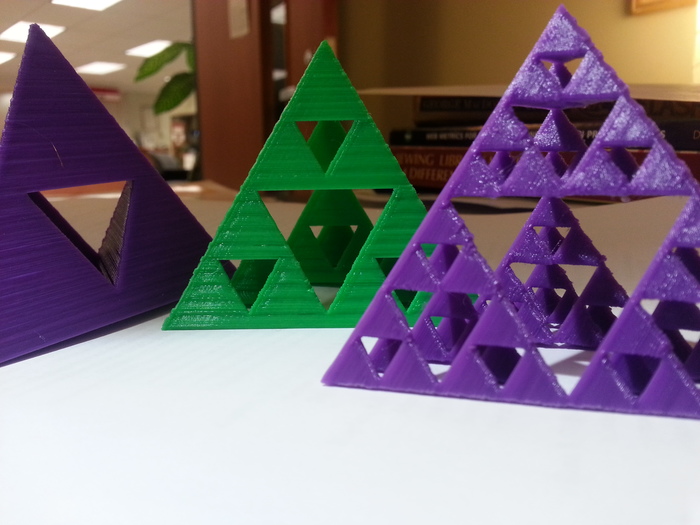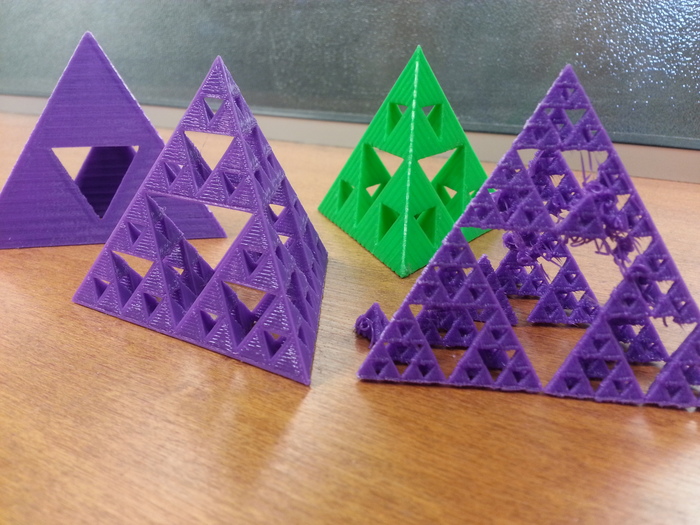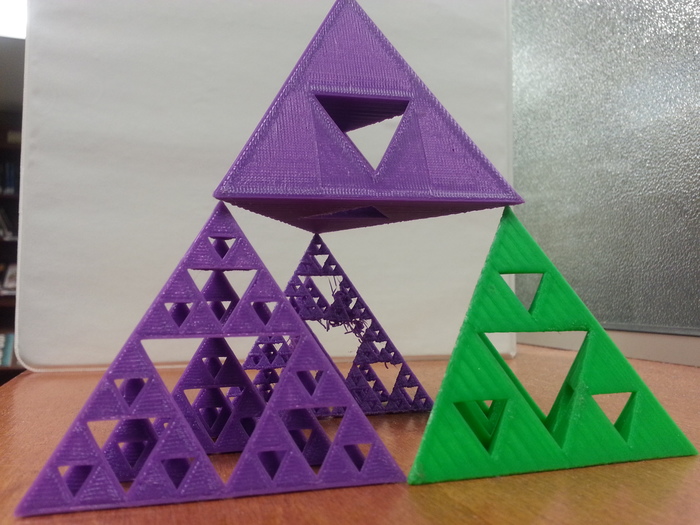Late last year I got a MakerBot Replicator Mini at work for some research I’m doing. I’ve been printing off some science and math things from Thingiverse, most recently four iterations built from this customizable Sierpinski tetrix.
A Sierpinski tetrix is the three-dimensional analogue of Sierpinski triangle, which is a fractal shape generated by taking a triangle, dividing it into four equal smaller triangles, removing the the middle one, then repeating the operation on each of the three remaining triangles, and so on, forever. You end up with a shape that has a finite (and always constant) perimeter, zero area (!), and a dimension of 1.585 (less than the two-dimensional figure it seems to be). That’s pretty wild.
The Wikipedia and Wolfram MathWorld articles explain more and have diagrams and math. Here are some pictures of what I printed.

With the tetrix, you start with a tetrahedron, divide it up and remove the middle bit so you have four equal smaller tetrahedra, as shown on the left. Repeat the process with each of the four tetrahedra and you get 16 (4^2) smaller tetrahedra, as shown in the middle. Repeat again to the third iteration and you have 64 (4^3) smaller tetrahedra, as shown on the right.
At the limit you end up with a shape with a constant surface area (unchanged through each iteration), zero volume (!), and 2 dimensions (!!). You can’t print to an infinite level of detail on this printer, which is understandable, but it turns out you can’t reliably print to the fourth iteration, either.

There are supposed to be 256 (4^4) little tetrahedra in that one on the right, but it glitched up while printing and went wonky, and then it broke apart when I removed the supporting material from the sides. It took over five hours to print.
I’ll try again (and I’d like to try it on a better printer) but if that doesn’t work I can print three more level-3 iterations and put them together, because you don’t have to make a big thing smaller, you can also make small things bigger.

I like the malformed fourth iteration … it looks like the ruin of a futuristic building, decayed after the nanobots that maintained it lost their energy and weird climate change-adapted vines started to grow.
 Miskatonic University Press
Miskatonic University Press